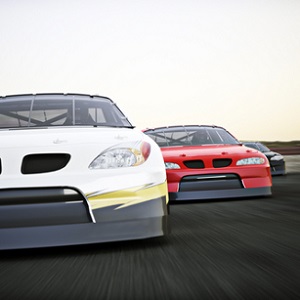Nascar Shows How Machine Learning Improves Human Performance

NASCAR has typically been in the forefront of using new technology to help improve its sport. So it will likely not be surprising to many that NASCAR is one of the first sports to fully implement automation into its officiating process. More specifically, “With its own servers and several laptop and monitor stations that line the walls, the high-tech truck analyzes data from dozens of cameras and sensors strewn across pit road to help officials identify pit stop infractions that would be easy to miss with the human eye.”
This new technology is limited to on-the-track use. NASCAR also uses machines during its pre-race inspections to identify potential rules violations. Through its partnership with Microsoft, NASACAR uses 60 tablets “ahead of races to log and analyze more than 300 items on cars before they hit the track, from their engines and fuel systems to weights and body measurements, to ensure each team is playing by the rules.”
NASCAR has found situations where machines are better than humans at identifying certain types of problems. It is difficult for the human eye to notice pit stop or lane change infractions when cars are moving at extremely fast speeds. In the past, NASCAR officials would still need to identify rules being violated and teams would often argue when they were penalized. Machines can slow everything down and process images in fractions of seconds. Machines have a similar impact on pre-race inspections. Given the complexity of the cars involved with races, human inspections used to take hours. Pre-race inspections now take minutes.
The results have been immediately felt in the sport. According to a recent SportTechie post, “Of the infractions that have been called this season, teams are more often than in the past willing to leave them undisputed, the result of having been proven wrong too many times by video evidence and lasers that can accurately map pit road to within one-sixteenth of an inch." In fact, NASCAR has seen infractions decrease dramatically because teams know they are more likely to be fairly penalized for rules violations.
The larger insight is that rules infractions are not typically considered a core part of the audience experience with the sport. NASCAR saves time, money, and human capital on investigating rules violations that are difficult for humans to evaluate while offering its customers a better product. Instead of teams, fans, and sponsors debating on whether an infraction has occurred, they can focus on how the drivers and the teams employ strategy during races.
One of the fears with machine learning is that it could take the human element out of sports. However, there are elements of sports competitions where machines do a better job than humans. That is a good thing because it enables humans to focus on the areas where they can add the most value and sports to focus on the ways to best engage their core audiences. NASCAR is demonstrating the power that machine learning and automation can have on improving human performance.
This article was originally published at Block Six Analytics by Adam Grossman.
Adam is the CEO and Founder of Block Six Analytics. In addition, he is a lecturer for Northwestern University’s Master's in Sports Administration. He is the co-author of The Sports Strategist: Developing Leaders For A High-Performance Industry. His work has been featured in publications including Forbes, The Washington Post, The Chicago Tribune, and Comcast SportsNet Chicago.
